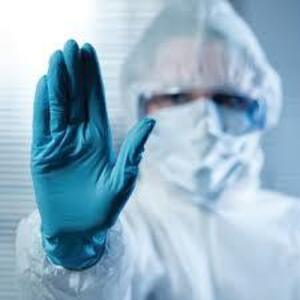10 signatures reached
To: Department of Health, Health Service Executive
Personal Protective Equipment for Healthcare Workers 🇮🇪 #PPE4HCW ☘️

Protect our Healthcare Workers (HCW) on the frontlines of the Coronavirus Pandemic & provide Personal Protective Equipment (PPE), including eye protection, face shields or surgical masks.
🇮🇪 #PPE4HCW ☘️
In light of new evidence, current infection control guidelines in Irish hospitals need to be updated. At the very least, HCWs should wear a surgical mask when in open areas to avoid indirect transmission of the virus.
“A Soldier doesn't jump from a plane without A Parachute! Don't send our HCWs into battle without PPE”
🇮🇪 #PPE4HCW ☘️
🇮🇪 #PPE4HCW ☘️
In light of new evidence, current infection control guidelines in Irish hospitals need to be updated. At the very least, HCWs should wear a surgical mask when in open areas to avoid indirect transmission of the virus.
“A Soldier doesn't jump from a plane without A Parachute! Don't send our HCWs into battle without PPE”
🇮🇪 #PPE4HCW ☘️
Why is this important?
The outbreak of #COVID-19 has clearly placed HCWs at risk. Infection with 2019-nCoV has been detected in 375 HCWs, 26% of cases (as at 25 March 2020) and 1 HCW has died.
#COVID-19 is spread through both direct (droplet and person-to-person) as well as indirect contact (contaminated objects and airborne transmission). This supports the use of airborne isolation precautions.
🇮🇪 #PPE4HCW ☘️
MEDICAL EVIDENCE SUPPORTING #PPE4HCW:
The virus is spread by direct transmission (cough, sneeze, droplet inhalation), contact transmission (oral, nasal, and eye mucous membranes) and in the gastrointestinal tract, urine and stools (https://www.sciencedirect.com/science/article/pii/S0924857920300984)
The NEJM published evidence of aerosol transmission on 17 March 2020. Analysis of droplet, aerosol and surfaces found that CoV-19 could be detected in: aerosols in a relatively closed environment up to 3 hours post aerosolization, up to 4 hours on copper, up to 24 hours cardboard and up to 2-3 days on plastic and stainless steel (https://www.nejm.org/doi/full/10.1056/NEJMc2004973)
One study from Nebraska found extensive levels of virus contamination in hospitals and on equipment for up to 2 days thus posing a clear infection risk to HCW (https://www.medrxiv.org/content/10.1101/2020.03.23.20039446v2.full.pdf)
🇮🇪 #PPE4HCW ☘️
This evidence solidly confirms that is vital that PPE including eyewear or face shield should be worn throughout the treatment and disinfected between patients.
🇮🇪 #PPE4HCW ☘️
#COVID-19 is spread through both direct (droplet and person-to-person) as well as indirect contact (contaminated objects and airborne transmission). This supports the use of airborne isolation precautions.
🇮🇪 #PPE4HCW ☘️
MEDICAL EVIDENCE SUPPORTING #PPE4HCW:
The virus is spread by direct transmission (cough, sneeze, droplet inhalation), contact transmission (oral, nasal, and eye mucous membranes) and in the gastrointestinal tract, urine and stools (https://www.sciencedirect.com/science/article/pii/S0924857920300984)
The NEJM published evidence of aerosol transmission on 17 March 2020. Analysis of droplet, aerosol and surfaces found that CoV-19 could be detected in: aerosols in a relatively closed environment up to 3 hours post aerosolization, up to 4 hours on copper, up to 24 hours cardboard and up to 2-3 days on plastic and stainless steel (https://www.nejm.org/doi/full/10.1056/NEJMc2004973)
One study from Nebraska found extensive levels of virus contamination in hospitals and on equipment for up to 2 days thus posing a clear infection risk to HCW (https://www.medrxiv.org/content/10.1101/2020.03.23.20039446v2.full.pdf)
🇮🇪 #PPE4HCW ☘️
This evidence solidly confirms that is vital that PPE including eyewear or face shield should be worn throughout the treatment and disinfected between patients.
🇮🇪 #PPE4HCW ☘️

